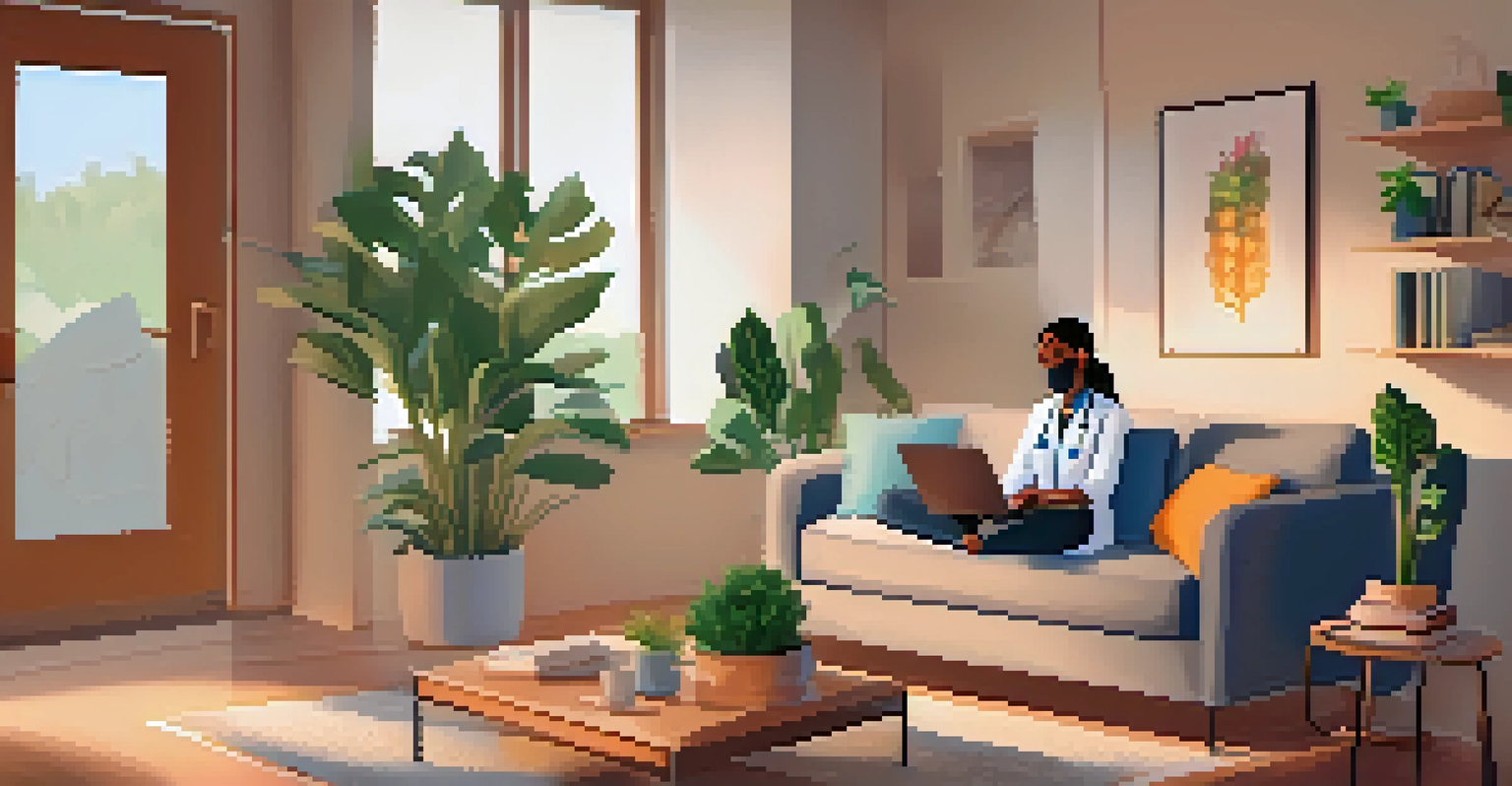Access to Healthcare in Missouri: Challenges and Solutions

Overview of Healthcare Access in Missouri
Access to healthcare is a pressing concern in Missouri, impacting many residents. With a mix of urban and rural populations, the state faces unique challenges in healthcare delivery. Understanding these challenges is key to developing effective solutions that can ensure every Missourian receives the care they need.
Access to healthcare is a right, not a privilege.
In Missouri, factors such as socioeconomic status, geography, and insurance coverage significantly influence healthcare access. Rural areas, in particular, struggle with fewer providers and long travel distances to medical facilities. This disparity highlights the urgent need for targeted interventions to bridge the gap in healthcare access.
While Missouri has made strides in improving healthcare access, significant obstacles remain. Addressing these issues requires collaboration among government, healthcare providers, and communities to create a more equitable healthcare landscape for all residents.
Challenges in Rural Healthcare Access
Rural healthcare access in Missouri faces specific challenges that can severely affect patient outcomes. One of the most pressing issues is the shortage of healthcare providers in these areas, which leads to long wait times for patients. Imagine living in a small town without a nearby doctor; this is a reality for many Missourians.

Transportation also plays a crucial role in healthcare access, especially for those living in remote areas. Many residents may not have a vehicle or public transportation options to reach healthcare facilities, making it difficult to attend appointments. This barrier can significantly delay necessary treatments and preventive care.
Rural Areas Struggle with Access
Missouri's rural populations face significant healthcare access challenges due to provider shortages and long travel distances.
Additionally, the stigma surrounding mental health and limited mental health resources in rural areas compound the challenges. Many individuals may avoid seeking help due to fear of judgment or lack of available services, leading to a cycle of untreated conditions. Addressing these challenges is vital for improving overall health in rural Missouri.
Insurance Coverage Gaps in Missouri
Insurance coverage is a critical factor influencing healthcare access in Missouri. A significant portion of the population remains uninsured or underinsured, which limits their ability to seek necessary care. This situation is particularly acute for low-income individuals and families who struggle to afford premiums and out-of-pocket expenses.
The greatest wealth is health.
The expansion of Medicaid in Missouri has been a hot topic, as it could help fill some of these gaps. By providing coverage to more low-income individuals, many could gain access to essential healthcare services. However, political and administrative hurdles continue to slow down progress in this area.
Even for those with insurance, high deductibles and copays can deter people from seeking care. Many Missourians weigh the cost of treatment against their budgets, often opting to delay or forgo necessary medical attention. This dilemma highlights the need for comprehensive solutions that make healthcare more affordable for all.
The Role of Telehealth in Expanding Access
Telehealth has emerged as a game-changer in expanding healthcare access, particularly in Missouri's rural areas. This technology allows patients to connect with healthcare providers remotely, bypassing geographical barriers. Imagine being able to consult a specialist from the comfort of your home—this is now a reality for many.
During the COVID-19 pandemic, telehealth usage skyrocketed, showcasing its potential to improve access to care. Patients who previously struggled to visit clinics could now receive timely consultations and follow-up care virtually. This trend continues as more providers and patients recognize the convenience and effectiveness of telehealth services.
Insurance Gaps Limit Care Options
Many Missourians remain uninsured or underinsured, hindering their ability to seek necessary medical care.
However, challenges remain, such as technology access and digital literacy among certain populations. Ensuring that everyone can benefit from telehealth requires ongoing efforts to provide training and resources. Bridging this digital divide is crucial to fully realizing the benefits of telehealth in Missouri.
Health Disparities Among Vulnerable Populations
Missouri's vulnerable populations, including racial and ethnic minorities, often face greater health disparities. These groups may experience barriers such as language differences, cultural misunderstandings, and limited access to culturally competent care. As a result, their health outcomes can be significantly worse than those of their white counterparts.
Moreover, socioeconomic factors compound these disparities, creating a cycle of poor health and limited resources. For example, individuals living in poverty may prioritize immediate needs over preventive care, leading to worse long-term health outcomes. Addressing these social determinants of health is essential for improving equity in healthcare access.
Community outreach and targeted health programs can help bridge these gaps. By tailoring services to the unique needs of vulnerable populations, Missouri can work towards reducing health disparities and improving overall public health. This approach emphasizes the importance of inclusivity in healthcare initiatives.
Innovative Solutions: Community Health Programs
Community health programs play a vital role in improving healthcare access in Missouri. These initiatives often focus on underserved populations, providing services such as screenings, vaccinations, and health education. By meeting people where they are, these programs help to break down barriers to care.
One successful example is the use of mobile clinics that travel to rural and underserved areas. These clinics bring essential healthcare services directly to communities, making it easier for residents to receive care. This innovative approach not only increases access but also fosters trust and engagement within the community.
Telehealth Expands Healthcare Access
Telehealth has become an essential tool for improving healthcare access in rural Missouri, allowing remote consultations and care.
Partnerships between local organizations, healthcare providers, and government agencies are essential for sustaining these programs. By collaborating, stakeholders can pool resources and expertise to create more comprehensive health solutions. This teamwork ultimately leads to healthier communities and improved access to care.
Policy Recommendations for Improved Access
Addressing healthcare access in Missouri requires thoughtful policy changes that prioritize the needs of residents. Expanding Medicaid eligibility is a critical step that could provide coverage to thousands of uninsured individuals. This move would not only improve access to care but also strengthen the state's economy by reducing uncompensated care costs.
Additionally, investing in rural healthcare infrastructure is essential for attracting and retaining healthcare providers. Incentives such as loan forgiveness programs for medical professionals willing to work in underserved areas can help alleviate provider shortages. Enhancing telehealth regulations and expanding broadband access are also crucial for ensuring that remote consultations are a viable option.

Finally, ongoing community engagement is vital for understanding the unique challenges residents face. Policymakers should actively seek input from diverse communities to shape effective healthcare strategies. By prioritizing collaboration and inclusivity, Missouri can create a more equitable healthcare system that benefits everyone.